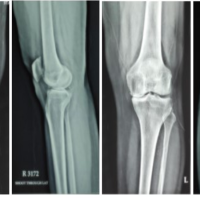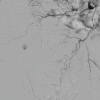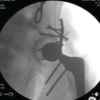[box type=”bio”] Learning Point for the Article: [/box]
Acute crystal arthropathy is a differential diagnosis of an acutely inflamed knee arthroplasty despite the abscence of previous history, with early arthrocentesis surgery may be avoided,; however, erring on the side of caution is advised and the possibility of concomitant acute pseudogout and infection should be considered.
Case Report | Volume 8 | Issue 4 | JOCR July – August 2018 | Page 32-34| Miltiadis Argyropoulos, K P Iyengar, K H Suraliwala. DOI: 10.13107/jocr.2250-0685.1146
Authors: Miltiadis Argyropoulos[1], K P Iyengar[1], K H Suraliwala[1]
[1]Department of Trauma and Orthopaedics, Southport & Ormskirk NHS Trust, Southport, England.
Address of Correspondence:
Dr. Miltiadis Argyropoulos,
Southport and Ormskirk Hospital NHS Trust, Southport and Formby District General Hospital, Town Lane, Kew, Southport, Merseyside, PR8 6PN.
E-mail: miltos.argyropoulos@googlemail.com
Abstract
Introduction: Infection of a total knee replacement (TKR) is a very serious complication of knee arthroplasty surgery as the repercussions for the patient often include long-term antibiotics, further surgery, revision surgery, and worse outcomes in the long-term including increased morbidity and mortality. As such, the careful assessment of a patient presenting with an acutely inflamed TKR is of paramount importance.
Case Report: We report a case of a patient presenting with the clinical signs and symptoms of an acute infection of their TKR. The patient was ultimately diagnosed as having pseudogout.
Conclusion: This case illustrates that crystal arthropathy must be one of the differential diagnoses for a suspected infection of a TKR, as failure to recognize this may result in unnecessary and detrimental treatment.
Keywords: Arthroplasty, Pseudogout, Total knee replacement, Unicompartmental knee replacement.
Introduction
Infection of a total knee replacement (TKR) is a very serious complication of knee arthroplasty surgery as the repercussions for the patient often include long-term antibiotics, further surgery, revision surgery, and worse outcomes in the long-term including increased morbidity and mortality [1]. As such, the careful assessment of a patient presenting with an acutely inflamed TKR is of paramount importance.
Case Report
Our patient is a 77-year-oldfemale who underwent a TKR of her right knee for symptomatic osteoarthritis. She suffers from tablet controlled type 2 diabetes mellitus, glaucoma, and OA of her hips and left knee but is otherwise fit and well and has good mobility. She had no previous history of gout or pseudogout. Her right knee had been treated with four steroid injections over the course of the past3 years; however, the efficacy of these diminished and so the decision for arthroplasty was made. Our patient presented through the Emergency Department of our hospital 5 weeks following her operation complaining of a 3-day history of increasing pain, swelling, and stiffness of her right leg with difficulty to weight bear. Her knee had been improving steadily over the 4 weeks following her operation, and she did not experience any wound problems. On clinical examination, her knee was swollen, hot, and very tender to touch. She had a range of motion of 10–30° limited by pain, and she recorded a single temperature reading of 38.0 with a slight tachycardia at presentation. She had elevated inflammatory markers: C-reactive protein 98.9 mg/L and white cell count 16.2 ×109/L with neutrophils at 13.92 ×109/L. Radiographs (Fig. 1) were unremarkable with no evidence of loosening. An ultrasound scan was performed to rule out deep vein thrombosis. Her knee was aspirated under sterile conditions in the operating theater, and 60mL of cloudy straw-coloured fluid was drained. The joint was aspirated to dryness. Analysis of the aspirate revealed the presence of calcium pyrophosphate dihydrate crystals and a high level of white cells, and there were no organisms seen on Gram stain. She was put in a cricket pad splint for comfort, and nonsteroidal anti-inflammatory drugs (NSAIDs) were started, but no antibiotics were administered. She was provisionally booked for a washout the next morning. Our patient improved clinically overnight and so antibiotics or formal washout was not deemed necessary, and she was confidently diagnosed with pseudogout. Enrichment cultures of her aspirate did not grow any microorganisms. Her symptoms resolved over the next week and she has not had any further exacerbations to date.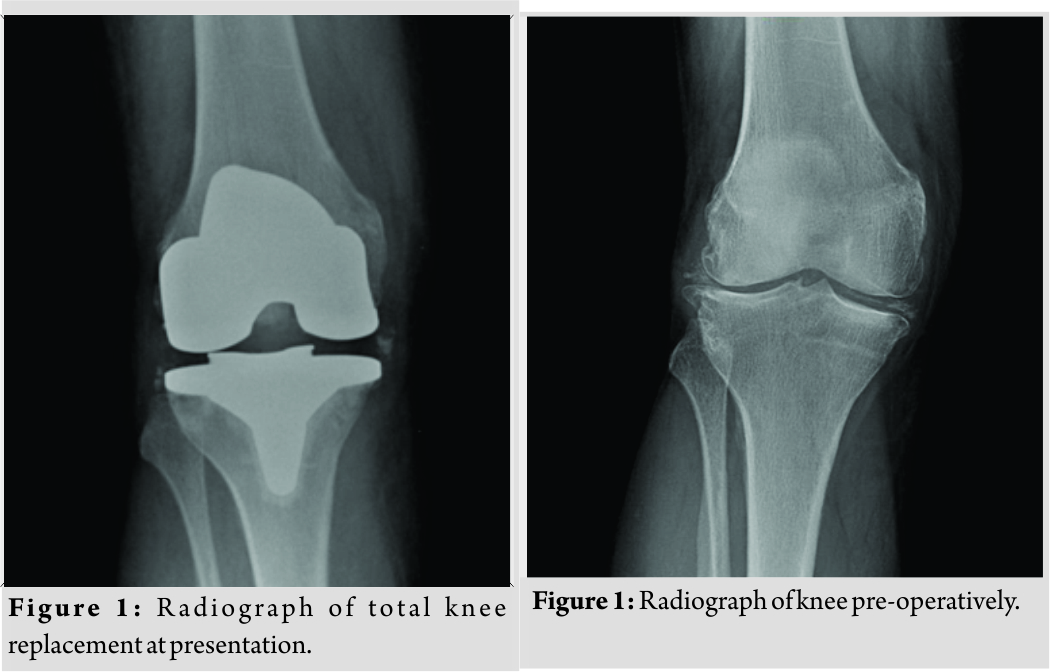
Discussion
Post-operative pseudogout is a rare phenomenon given the large volumes of TKRs taking place annually. Diagnosis is difficult as it presents in an indistinguishable fashion from infection. Our literature search revealed only eight case reports to date [2, 3, 4, 5, 6, 7,8, 9, 10], one of which was a bilateral presentation [10]. Pseudogout has also been reported in unicompartmental knee replacements [11],and there are also reports of gout affecting TKRs [8, 12, 13, 14, 15, 16]. Interestingly in three of the aforementioned cases of pseudogout affecting TKRs, the patients underwent surgical washout [4, 5, 6], and in all cases, antibiotic treatment was commenced. In two cases, antibiotic administration was prolonged because it was commenced before arthrocentesis obscuring the diagnostic picture [10]. In our presented case, there was no previous history of acute pseudogout; however, there was evidence of chondrocalcinosis in her right knee as is visible in Fig. 2, suggesting a chronic subacute clinical picture. Chondrocalcinosis is a radiological finding associated with pseudogout but not pathognomonic of having acute pseudogout episodes. Risk factors include hyperparathyroidism, OA, loop diuretic use, and chronic renal failure [17]. A recent systematic review on crystal arthropathy following TKR found that in 13.3% of cases, there was concomitant acute infection as well as crystal arthropathy [18]. Our case is unique in that we withheld antibiotics on the basis of the clinical picture of the patient. Our arthrocentesis results made available within the hour showed high levels of calcium pyrophosphate crystals, elevated white cells, but no organisms. The patient was not septic at the time that this decision was made (normal heart rate and apyrexial). Furthermore, the knee joint was aspirated to dryness allowing us to assess improvement overnight on NSAIDs and rest.
Conclusion
Our case highlights the importance of including crystal arthropathy as a differential diagnosis in suspected infections of TKRs. It is therefore imperative that the aspirate from arthrocentesis undergoes screening with microscopy and birefringence testing routinely, to exclude pseudogout. This is the first reported case of pseudogout in TKR where no antibiotics were administered as part of the management.
Clinical Message
Acute crystal arthropathy should be included in the differential diagnoses of a patient presenting with an acutely inflamed knee arthroplasty. This case illustrates that antibiotics and surgery may be avoided with appropriate clinical assessment; however, the risks and repercussions of infection are significant, and erring on the side of caution is advised. Furthermore, clinicians must also consider the possibility of a concomitant acute pseudogout and acute infection. A further important learning point is that arthrocentesis must precede antibiotic administration to avoid diagnostic uncertainty unless clinical urgency dictates otherwise.
References
1. Berbari EF, Hanssen AD, Duffy MC, Steckelberg JM, Ilstrup DM, Harmsen WS, et al. Risk factors for prosthetic joint infection: Case-control study. Clin Infect Dis 1998;27:1247-54.
2. Harato K, Yoshida H. Pseudogout in the early postoperative period after total knee arthroplasty. J Arthroplasty 2013;28:374.e9-374.e11.
3. Hirose CB, Wright RW. Calcium pyrophosphate dihydrate deposition disease (pseudogout) after total knee arthroplasty. J Arthroplasty 2007;22:273-6.
4. Holt G, Vass C, Kumar CS. Acute crystal arthritis mimicking infection after total knee arthroplasty. BMJ 2005;331:1322-3.
5. Hunte TC, Bernstein HM, Dickinson GM. Acute crystalline arthritis in an artificial knee. J ClinRheumatol 2012;18:203-4.
6. Levi GS, Sadr K, Scuderi GR. Bilateral pseudogout8 years after bilateral total knee arthroplasty. OrthopClin N Am 2012;43:e59-62.
7. Sonsale PD, Philipson MR. Pseudogout after total knee arthroplasty. J Arthroplasty 2007;22:271-2.
8. Salin JW, Lombardi AV Jr, Berend KR, Chonko DJ. Acute gouty arthropathy after total knee arthroplasty. Am J Orthop 2008;37:420-2.
9. Swayamprakasam AP, Taqvi S, Hossain S. A case of mistaken identity: Pseudogout in a prosthetic knee. Br J Hosp Med 2013;74:54-5.
10. Zadaka A, Gioe T, Gertner E. Acute crystal-induced arthritis following arthroplasty. J Knee Surg 2010;23:17-20.
11. Kobayashi H, Akizuki S, Takizawa T, Yasukawa Y, Kitahara J. Three cases of pseudogout complicated with unicondylar knee arthroplasty. Arch Orthop Trauma Surg 2002;122:469-71.
12. Archibeck MJ, Rosenberg AG, Sheinkop MB, Berger RA, Jacobs JJ. Gout-induced arthropathy after total knee arthroplasty: A report of two cases. ClinOrthopRelat Res 2001;392:377-82.
13. Berger JS, Weinik MM. Acute gouty arthropathy mimicking infection after total knee arthroplasty. PM R 2009;1:284-6.
14. Blyth P, Pai VS. Recurrence of gout after total knee arthroplasty. J Arthroplasty 1999;14:380-2.
15. Crawford L, Kumar A, Shepard GJ. Gouty synovitis after total knee arthroplasty: A case report. J OrthopSurg (Hong Kong) 2007;15:384-5.
16. Rho YH, Zhu Y, Zhang Y, Reginato AM, Choi HK. Risk factors for pseudogout in the general population. Rheumatology 2012;51:2070-4.
17. Khalfaoui MY, Yassa R. Crystal arthropathy following knee arthroplasty: A review of the literature. Int J Orthop 2015;2:411-7.
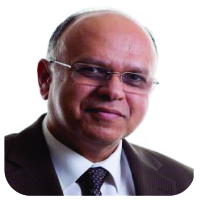 |
| Dr. K H Suraliwala |
| How to Cite This Article: Argyropoulos M, Iyengar K P, Suraliwala KH. First Presentation of Acute Pseudogout Following Total Knee Replacement. Journal of Orthopaedic Case Reports 2018 Jul-Aug; 8(4): 32-34. |
[Full Text HTML] [Full Text PDF] [XML]
[rate_this_page]
Dear Reader, We are very excited about New Features in JOCR. Please do let us know what you think by Clicking on the Sliding “Feedback Form” button on the <<< left of the page or sending a mail to us at editor.jocr@gmail.com


